Why are multi-regional web pages created for the same language and when does it make sense?
Creating similar webpages for the same language is correctly needed and used when a website needs to contextualise its content to a particular market. The most obvious example of this is e-commerce, where multinational platforms will need to tailor their products, pricing and promotional material to fit the market they’re servicing.
For example, on Apple’s website we can see that despite near duplicate content between Product Display Pages (PDPs), two separate web pages are created to denote currency differences.
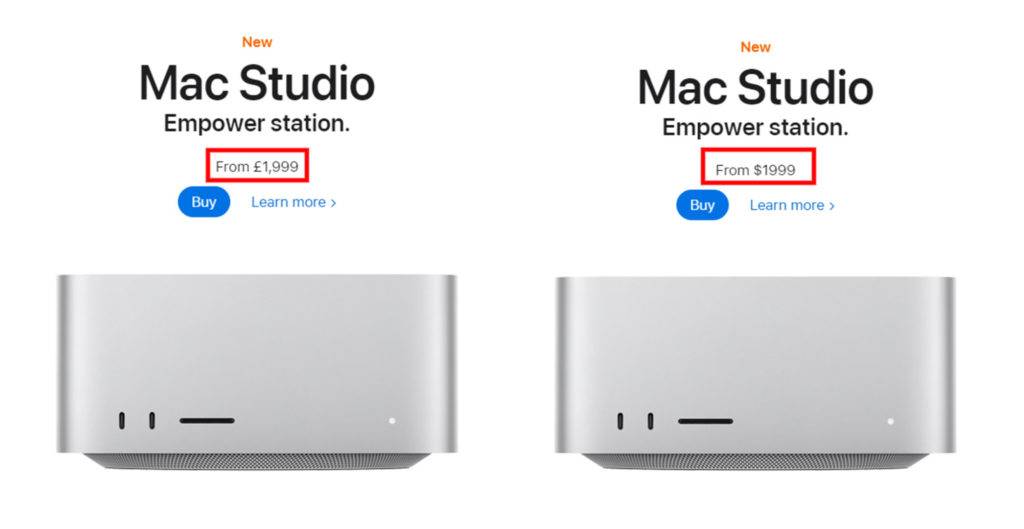
Another example of this would be Hunter Boots, which has both a US and GB website. When we compare the mens footwear landing page, it’s clear the promotional targeting and products are required to be completely different between each market:
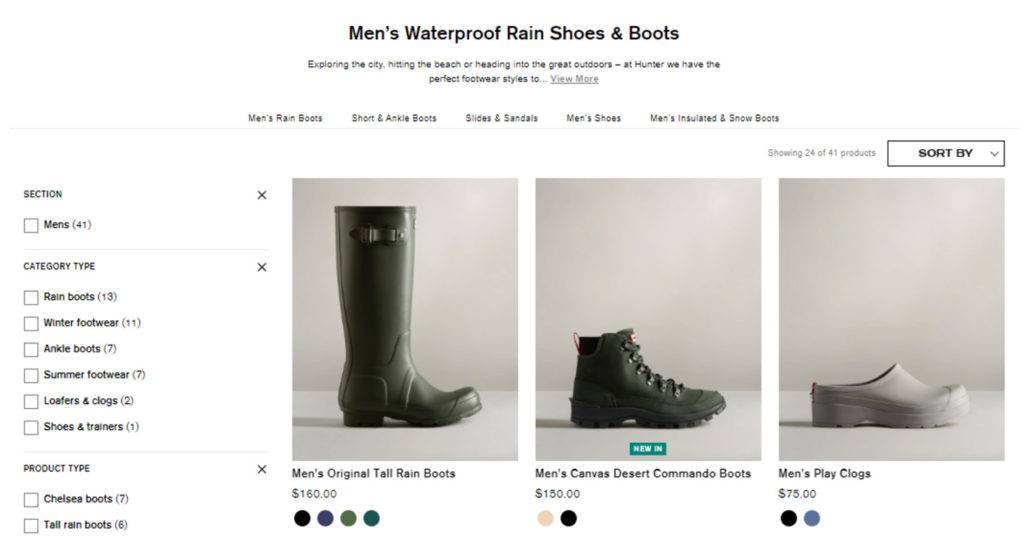
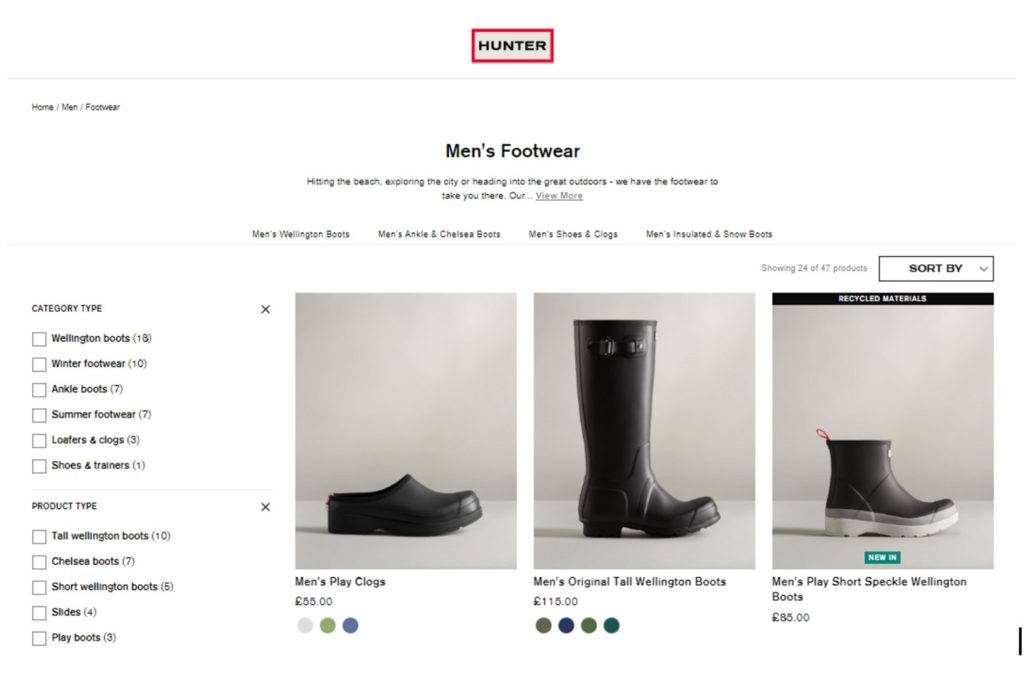
Having multiple regional webpages, including ones with similar content in the same language, is appropriate in these situations as the small differences have a significant impact on the intentionality of the page for both Google and users.
When do multi-regional webpages in the same language not make sense?
As a general rule, if the content does not change at all, then in all likelihood, duplicating that content to target multiple regions will not be necessary.
This will often be the case for informational style content like blog articles and guides where the language & page content may not change if contextualisation is not needed.
Using Apple as a thematic example, we see their FIDO article has 35 English versions of the article that are exact duplicates.
- https://www.apple.com/newsroom/2022/05/apple-google-and-microsoft-commit-to-expanded-support-for-fido-standard/
- https://www.apple.com/uk/newsroom/2022/05/apple-google-and-microsoft-commit-to-expanded-support-for-fido-standard/
- https://www.apple.com/ca/newsroom/2022/05/apple-google-and-microsoft-commit-to-expanded-support-for-fido-standard/
This is simply not necessary as Google’s default would be to show the standard English article provided that users were searching for this page in English.
What are the drawbacks to exact duplicate multi-regional webpages?
There are several reasons why duplicating content across multi-regional webpages for the same languages can lead to a performance decline. These are:
1. Google only interprets hreflang tags as a suggestion, not a directive.
Hreflangs tags do not guarantee that a specific country page will be visible in a specific country SERP, even if all the directives are set up correctly. This is because Hreflang tags are a suggestion; not a directive.
The chances of hreflang tags being ignored are greatly increased when content between pages is exactly duplicated and if there is a high flow of PageRank to one specific page. Using the example of Apple, we can see that despite there being dedicated regional pages to the UK and Canada, with the correct hreflang tag annotations; there is still some traffic from these markets heading to the primary US version of the page.

If the US page were to see an increase in regional backlinks, particularly from the UK and Canada, then it is more likely that the US version of the page will see an increase in SERP visibility in the UK and Canada, which could lead to increased cases of international keyword cannibalisation. This is where two or more pages negatively compete against each other to rank for the same keywords in a regional SERP.
2. Significantly increasing URLs will negatively impact crawl budget efficiency
By creating multi regional pages it significantly increases the number of pages and this impacts a site’s performance in two ways:
- Significantly increasing crawl requests may impact server resources. This can increase page load time due to server stress; leading to a worse performance in user experience.
- The increase in new pages will also mean an increase in PageRank dilution.This is when the link authority of a page is lessened as it spreads across a higher amount of pages. This can impact the page’s potential for organic performance.
Using a client example, we can see this effect where English webpages were created to target multiple regions such as Singapore.
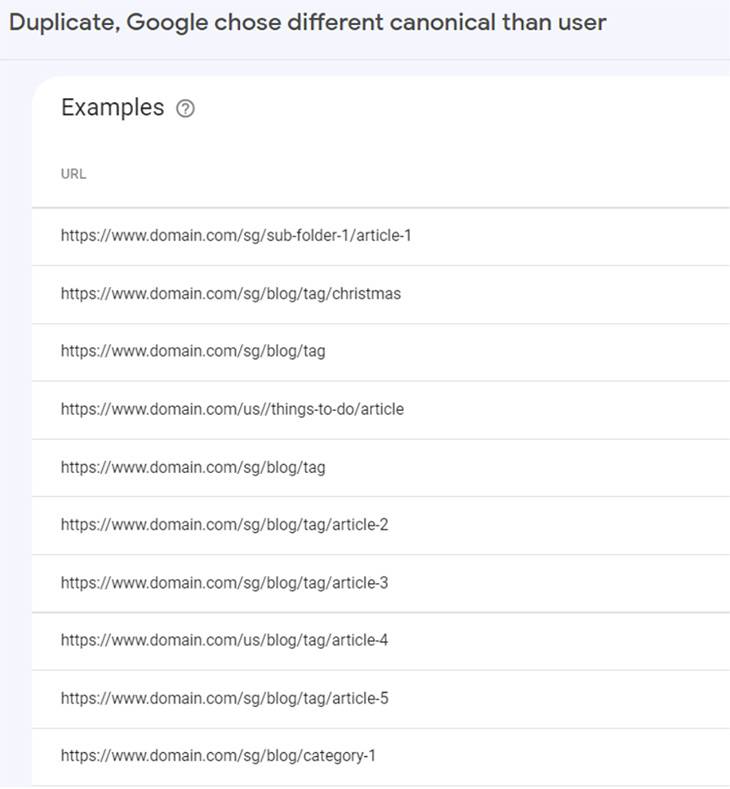
These pages are also exact duplicates of the original English version. The fact that these pages offered no additional value is likely to have had an additional devaluing effect in Google’s eyes.
Additionally, the English pages targeting Singapore were also deeper in the site’s architecture compared to the standard English page. This likely resulted in a lower flow of PageRank which had a devaluing effect on these pages.
These factors combined are the likely reason why these pages show up as not indexed despite Google discovering them and crawling them.
3. Greater risk of creating general potential errors on the site
Creating 35 duplicate pages could mean an additional 35 broken 404 internal links if a page template is followed. This effectively means that the size of any error can be compounded simply due to the addition of so many pages.
What’s an alternative approach to international targeting in the same language?
Where content across regions remains the same, an alternative approach to target an international audience would be an agnostic approach. This would mean creating only one page for one language, and the regional targeting kept agnostic by not setting a specified country to target.
Using the Apple FIDO article as an example again; this would mean creating only one English Blog page and not specifying regional targeting via the hreflang. An example set up would be:
URL:
hreflang="en"/><link rel="alternate" href="https://www.apple.com/newsroom/2022/05/apple-google-and-microsoft-commit-to-expanded-support-for-fido-standard/"
This mitigates the need to create 35 separate pages to target all possible English SERPs and it prevents the issue highlighted above.
How to work out what the best approach to take is
The process of adopting a standardised language approach to target multiple regions will depend heavily on site architecture and vertical.
For e-commerce platforms, pages with buying intent will likely need to be replicated across the same language to pick up regional nuances like currency. As a result the agnostic approach above is less likely to be applicable to e-commerce platforms unless they are using this approach for their blog / informational style pages.
B2B / service based businesses can heavily depend on the service provided, but often are more able to generalise content to avoid targeting specific regions.
Looking at the security company RedHat; It targets English, French, Spanish, German etc. without generally specifying an additional region it wants to target. This means that only one set of English pages target all English speakers in any country. The same principle is applied to French, Spanish, German etc. The exception is Portuguese, which RedHat have specified to only target Brazil.
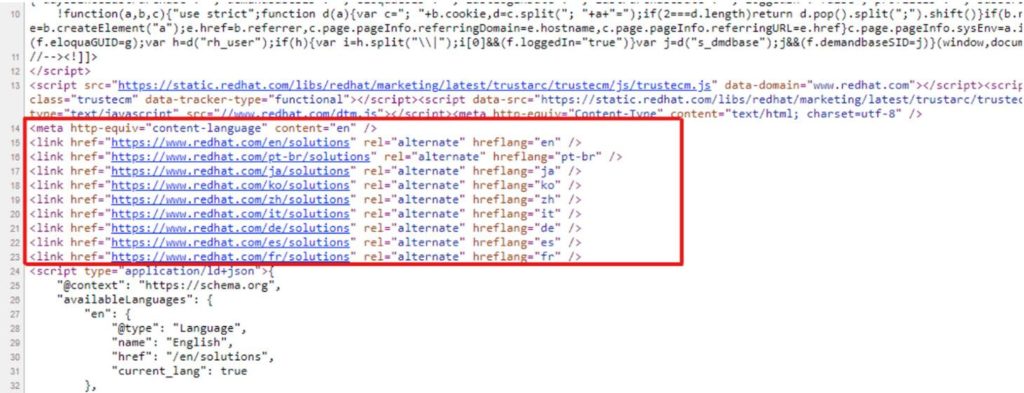
Using English as the primary example, this has allowed RedHat’s service pages to rank well in both the UK and the US. From a business perspective, the ability to manage, segment and process users happens off page after users have submitted a form / use the contact options to give their personal details. This takes away the need to micro target from an SEO level.
Two things to keep in mind when adopting a regionally agnostic strategy
1. Adopting a regionally agnostic content strategy can fix the internal navigation to one region; depending on a website setup. For example if Apple were to standardise their 35 English blog articles into one article; then a Canadian user who lands on article may be stuck with menu navigation links for the US version of the website. This can create a bad user experience if the user wishes to explore the website past the article.
This can be mitigated by using JS to adapt the navigation based on a user location, however this can create its own set of technical challenges and so the site architecture needs to be factored in. Having a standard language architecture from the start, like the one seen from RedHat, mitigates this limitation.
2. Small regional tweaks may be beneficial if there is an opportunity to implement them. A classic example of this is the difference between UK and US spelling with words like “organization” vs. “organisation”.
The importance of this will need to be assessed on a case by case basis depending on whether the opportunity actually exists. Using a client as a case study, there was an 8% uptick in non-branded clicks when properly localising US spelling from UK spelling by changing words like “colour” to “color” for an e-commerce website.
This same trend can also be seen with this search pilot case study which saw 24% organic uplift after implementing the same strategy.
Final Thoughts
Trying to duplicate the exact content in the same language to target multiple regions is never necessary. Google is happy to serve the same English page to US or UK users if it is relevant to both markets. This is often the case for generic informational content and can be applicable to some service based websites as seen with RedHat.
The refined targeting via new pages and hreflang tags for specified countries, should ideally be reserved for instances where there are changes in content to meet specific regional needs, if the language remains consistent.
As always, individualised analysis and contextualisation is needed to understand which strategy is best adopted for international expansion. If you need help with this analysis / decision making; Builtvisible can help guide you through internal architecture planning; including expanding or refining international pages. You can get in touch via our contact form, and we’ll get back to you for an exploratory discussion.
